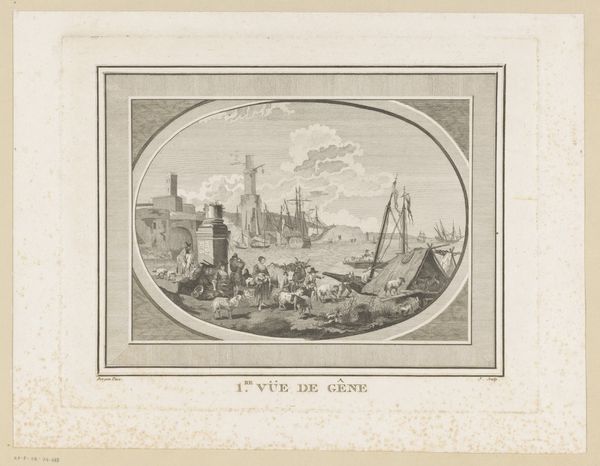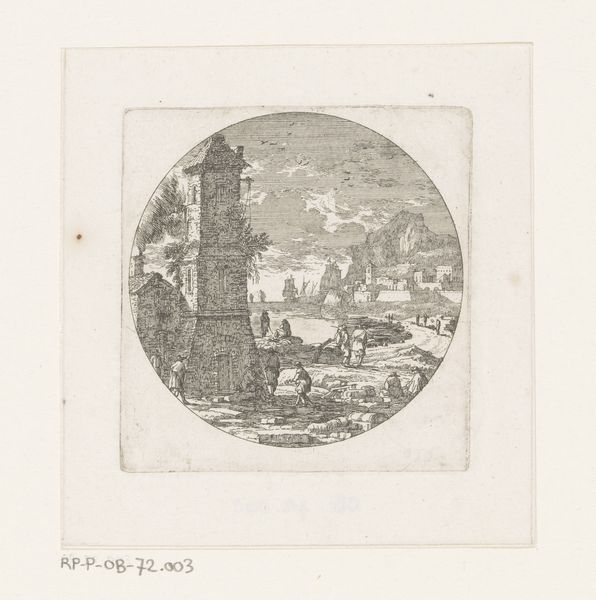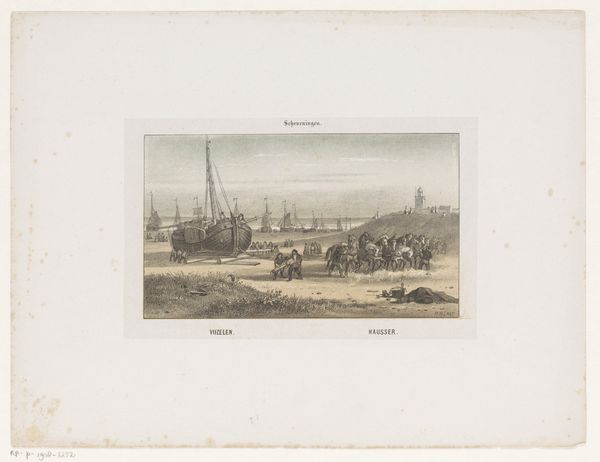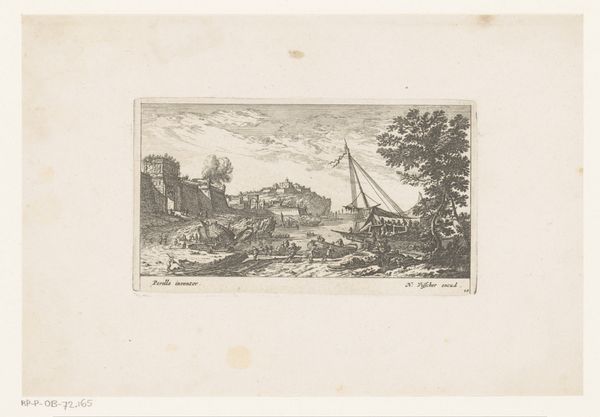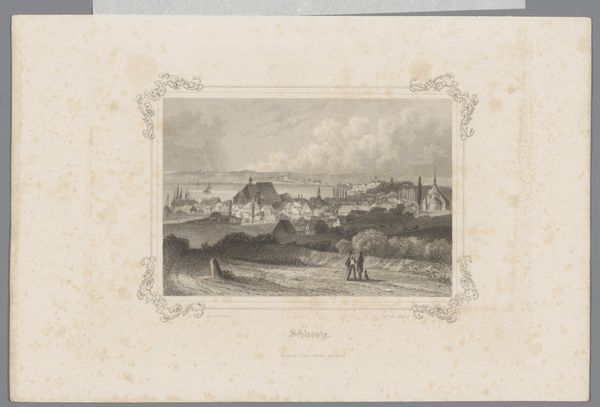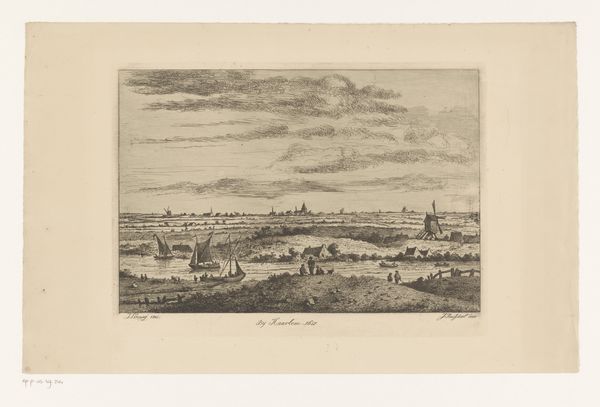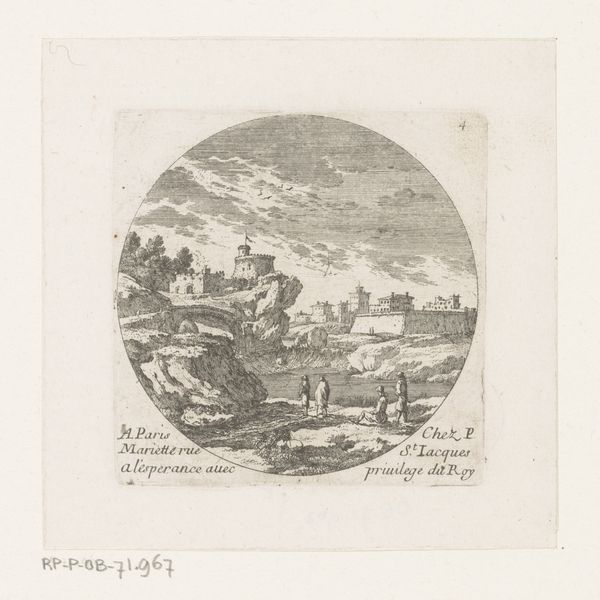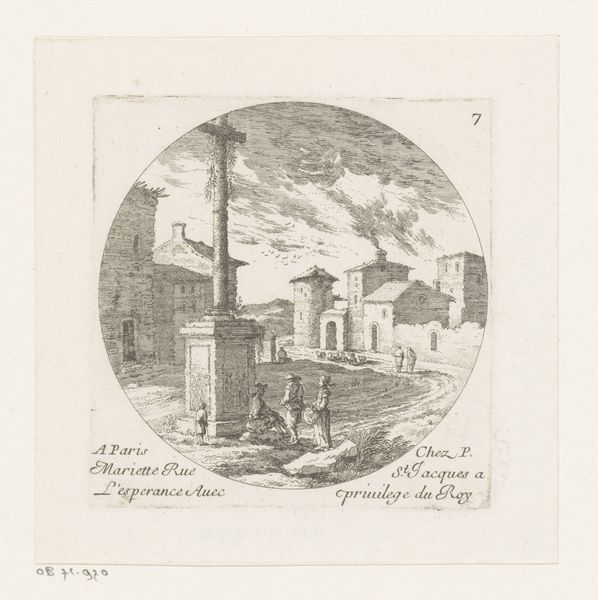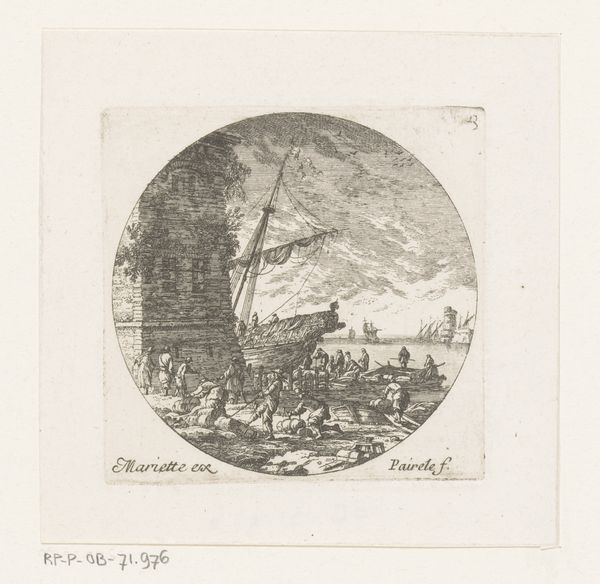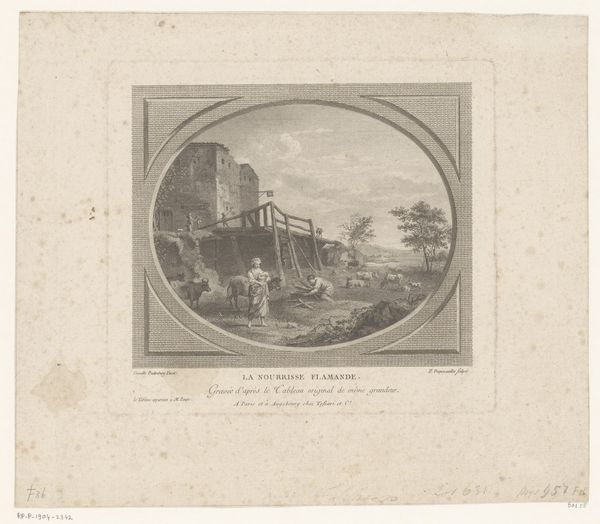
Dimensions: height 240 mm, width 309 mm
Copyright: Rijks Museum: Open Domain
Curator: Take a moment to observe this scene before us; an engraving entitled "Gezicht op Gênes," dating approximately from 1750 to 1814, attributed to the artist Monogrammist J. Editor: My first impression is one of ordered chaos—there's so much bustling activity packed into this oval frame. It gives me a feeling of constricted energy, the port trying to contain this mass of bodies laboring on its shore. Curator: Indeed, note how the composition utilizes an oval frame within the rectangular paper, creating an almost vignette-like focus. The sharp details achieved through engraving allow a meticulous rendering of architectural elements and human figures. Editor: What strikes me is the depiction of labor here. Are these bustling port workers representative of Genoa's vibrant economy, or does it conceal a darker narrative? The city's reliance on maritime trade during this period inevitably involved issues of colonialism and exploitation. Are those issues visible in the presentation? Curator: That's a stimulating way to consider this piece! Formally, I'm interested in how the composition is built of multiple triangulations. Note how the main foreground actors move toward the tower in the distance—or back toward a large sailing tent to the left of the frame. This gives the scene a sense of structure, despite all of the action and labor that is happening on this dock. Editor: And the gendered division of that labor is apparent too. We see what seem to be women caring for children or working together in what seems like cooperative production near that tent you mention, but we don’t get a lot of information on that. The composition is so fascinating in terms of light and shadow as well—but again, at the expense of some kind of realistic vision. Curator: The monochrome quality of the engraving flattens the potential drama of those areas, drawing attention to forms themselves. It underscores the structural harmony rather than allowing easy sentimentality. This visual presentation is a feature of engravings—making it all about lines, balance and scale. Editor: But that sentimentality you’re talking about—is that exactly the political move at play here? Making labor aesthetically pleasing, reducing the human experience to form? The absence of grit and grime might be obscuring very real socio-economic dynamics. It romanticizes Genoa—creating a false ideal. Curator: You are highlighting a fascinating contrast that resides just under the surface, questioning its function and cultural rhetoric! I will not look at this the same way. Editor: Which is, after all, why we do what we do. Let’s move on.
Comments
No comments
Be the first to comment and join the conversation on the ultimate creative platform.
